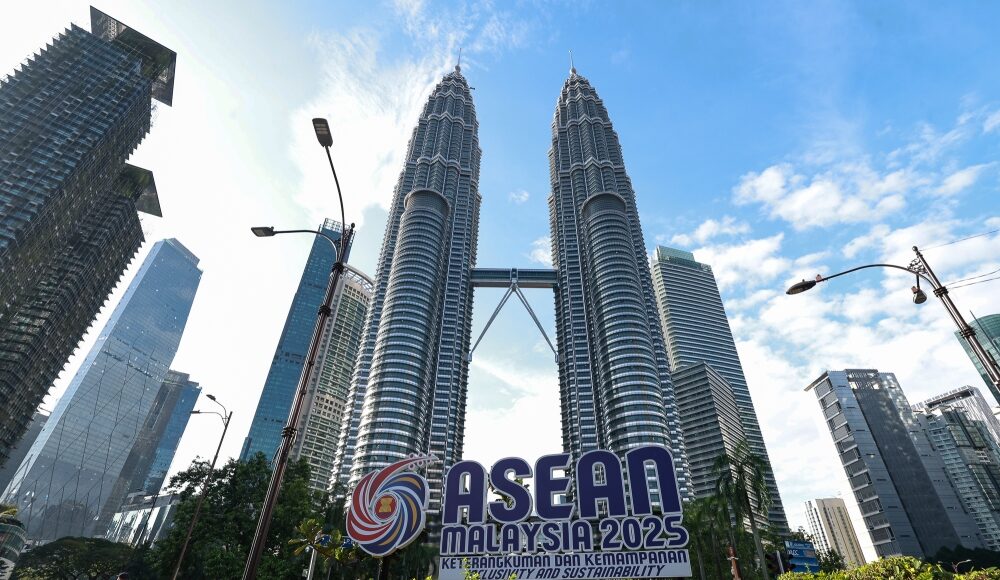MAY 24 — As the world becomes increasingly bifurcated between great powers, the question arises: Where do the Gulf Cooperation Council (GCC) and China turn to secure their interests, maintain stability, and grow their economies? The answer, more often than not, is Asean.
The preference for Asean by both the GCC and China is neither accidental nor symbolic. It is strategic. Asean offers something rare in today’s international system — a zone of neutrality, strategic pragmatism, and deep economic potential.
Asean as neutral convenor in a polarised world
At a time when global summits have become arenas for ideological confrontations, Asean remains one of the few platforms where powers from East and West, North and South, can sit together without posturing. The region does not lecture nor align blindly; it facilitates dialogue.
This is particularly appealing to the GCC and China, both of which are navigating turbulent relationships with the West. The GCC’s ties with the US remain transactional, occasionally strained over human rights and energy policy. China, meanwhile, finds itself embroiled in trade wars, tech bans, and geopolitical contests, especially in the Indo-Pacific.
Asean’s policy of non-interference and consensus diplomacy offers a non-threatening environment. It hosts, rather than imposes. It convenes, rather than coerces. For Gulf monarchies wary of criticism and for China sensitive to sovereignty, Asean is the perfect diplomatic architecture — open, non-judgmental, and functionally effective.
Energy, infrastructure, and the new Silk Roads
The GCC brings energy; China brings infrastructure. Asean connects them.
For the Gulf states, Asean is a major market for oil, gas, and petrochemical investments. Countries like Malaysia, Indonesia, and Thailand offer both stable demand and growing downstream industries. At the same time, Gulf sovereign wealth funds — from Saudi Arabia’s PIF to Qatar Investment Authority — see Asean as a diversified hedge against oil market volatility.
China, on the other hand, sees Asean as the anchor of its Maritime Silk Road. Its ports, railways, and fibre optic cables cut through Asean territory to reach South Asia, Africa, and beyond. Countries like Laos, Malaysia, and Indonesia are already integrated into China’s Belt and Road Initiative (BRI) matrix.
The GCC and China understand that Asean’s geographic centrality is indispensable. Sitting at the maritime crossroads of the Indian and Pacific Oceans, Asean is not just a transit zone — it is a strategic pivot.
Asean offers something rare in today’s international system — a zone of neutrality, strategic pragmatism, and deep economic potential. — Picture by Yusof Mat Isa
Religious and cultural diplomacy
For the Gulf states, Asean is also a religious frontier. Home to the world’s largest Muslim-majority country, Indonesia, as well as vibrant Muslim populations in Malaysia, Brunei, and southern Thailand and the Philippines, the region is a natural partner for Islamic diplomacy and halal economics.
The Gulf sees Asean not as a competitor in Islam, but as a partner in projecting a moderate and modern image of the Muslim world. Initiatives in Islamic banking, halal certification, and education flow seamlessly between the two.
China, while officially secular, is deeply aware of the symbolic weight of civilisational diplomacy. Through Confucian institutes, digital connectivity, and scholarships, it frames Asean as a region of cultural affinity, not friction. Unlike relations with India or Japan — often shaped by historical grievances — China’s ties with Asean rest on shared interests and limited baggage.
Asean as a laboratory for post-western multilateralism
The GCC and China are increasingly aligned in their search for alternative global governance structures. Both have grown wary of Western-dominated institutions like the IMF, World Bank, and even the UN. They seek forums where they are not outnumbered or lectured.
Asean-led platforms like the East Asia Summit, Asean+3, and the Regional Comprehensive Economic Partnership (RCEP) offer precisely that. Here, the agenda is set not in Brussels or Washington, but in Jakarta, Kuala Lumpur, and Hanoi.
Asean demonstrates that non-Western models of cooperation — based on mutual respect, functional pragmatism, and shared prosperity — can work. For the GCC and China, this is not just refreshing. It is instructive.
Conclusion: The Asean equation
In a world of zero-sum rivalries and collapsing multilateralism, Asean remains a strategic exception. The GCC and China see in it a pragmatic partner, a connective corridor, and a normative alternative.
It is not that Asean is powerful in the traditional sense. Its strength lies in its agility. It is not the loudest actor — but often the most listened to. And for the GCC and China, it is not about domination, but destination — a platform where economies can grow, civilisations can dialogue, and policies can be forged without fear or favour.
In this triangle of trade, trust, and transformation, Asean is not merely the middle. It is the meeting point.
* Phar Kim Beng, PhD, is Professor of Asean Studies at the International Islamic University Malaysia and Visiting Faculty, Asia-Europe Institute, University of Malaya.
** This is the personal opinion of the writer or publication and does not necessarily represent the views of Malay Mail.





